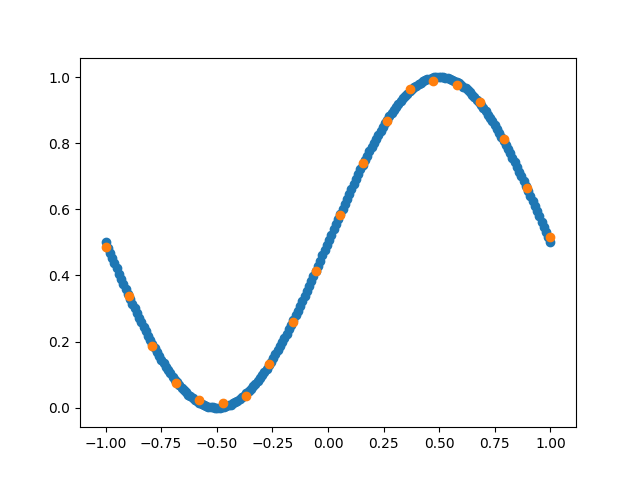概要
windowsでTensorFlowやってみた。
sin(x) を返すニューラルネットワークを作ってみた。
プログラムの手順
学習データの用意
data_x = np.linspace(-3, 3, 20)
data_y = np.sin(data_x) / 2.0 + 0.5
モデルの作成
入力、出力にplaceholder
x_in = tf.placeholder("float", [None, 1])
y_out = tf.placeholder("float", [None, 1])
重みとバイアス用にVariable
W1 = tf.Variable(tf.random_uniform([1, 20]))
W2 = tf.Variable(tf.random_uniform([20, 1]))
b1 = tf.Variable(tf.zeros([20]))
b2 = tf.Variable(tf.zeros([1]))
活性化関数を使う
y1 = tf.nn.sigmoid(tf.matmul(x_in, W1) + b1)
y2 = tf.nn.sigmoid(tf.matmul(y1, W2) + b2)
ロス値を定義
loss = tf.nn.l2_loss(y2 - y_out)
最適化の方法定義
train = tf.train.GradientDescentOptimizer(0.01).minimize(loss)
セッションを定義して学習する。
with tf.Session() as sess:
sess.run(tf.initialize_all_variables())
for i in range(100000):
choice = np.random.randint(0, 20, 4)
batch_x = data_x[choice].reshape(4, 1)
batch_y = data_y[choice].reshape(4, 1)
sess.run(train, feed_dict = {
x_in: batch_x,
y_out: batch_y
})
テストデータで取り出す。
test_x = np.linspace(-3, 3, 20)
test_y = sess.run(y2, feed_dict = {
x_in: test_x.reshape(20, 1)
})
